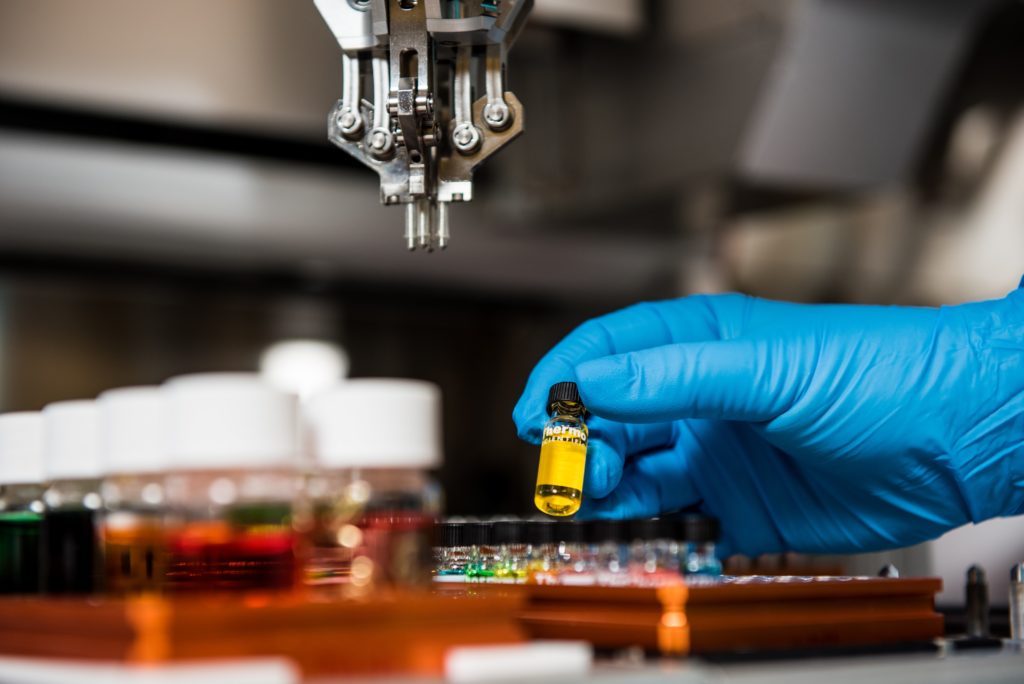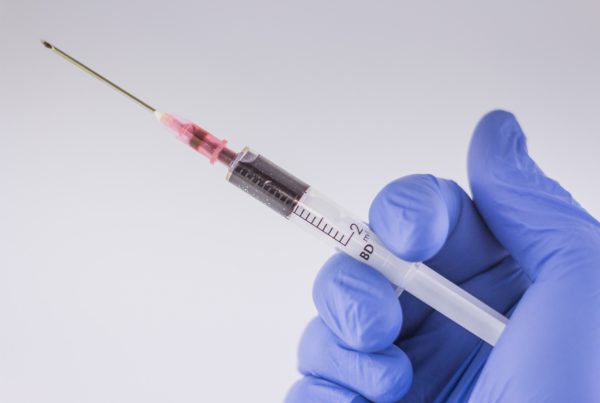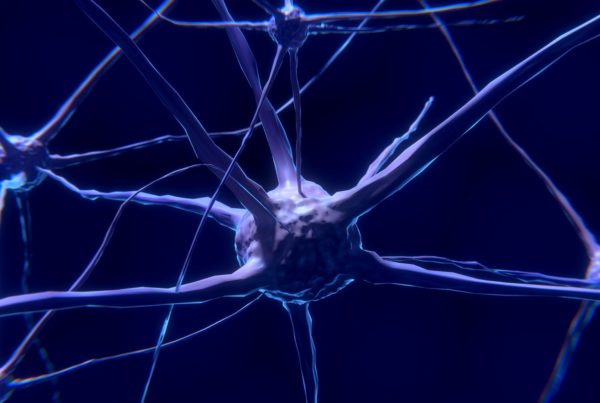Some of the biggest scandals and upsets in the history of professional sports have involved the use of banned performance-enhancing substances, commonly known as doping. The list of banned drugs and substances is updated on a regular basis to reflect the World Anti-Doping Agency’s ongoing efforts to protect athletes from potentially dangerous drugs and to ensure a fair and level playing field in professional and amateur sports.
According to the United Nations Educational, Scientific and Cultural Organization (UNESCO), banned substances fall into several categories:
- Steroids
- Diuretics
- Hormones
- Narcotics
- Stimulants
- Cannabinoids
Anti-doping measures are so strict that even taking a banned substance by accident is considered doping, so it’s very important to know what you’re taking, whether the list of ingredients is accurate, and where they have been sourced and manufactured.
Synthetic replicas of human growth hormone (HGH) used for the purposes of performance enhancement have been at the center of much controversy for many years, so it’s natural for there to be some confusion about the relationship between HGH and peptides.
Here is what you need to know about the differences between peptides and human growth hormone (HGH).
The Difference Between Natural and Synthetic Human Growth Hormone
Human growth hormone is produced by the pituitary gland and is responsible for a number of vital functions, including:
- Cell growth, regeneration, and reproduction
- Stimulates production of insulin-like growth factor 1 (IGF-1)
IGF-1, in turn, plays a vital role in cell growth and development throughout the body, including:
- DNA synthesis
- Musculoskeletal tissue
- Bone
- Nerve
- Cartilage
- Liver
- Skin
- Lung
The pituitary gland produces human growth hormones steadily throughout childhood and adolescence to assist with organ and cell development and the process of puberty. However around puberty, natural HGH production begins to taper off and then decline as we reach adulthood.
In some cases, the pituitary gland doesn’t produce enough human growth hormone for the body to develop properly, in which case HGH supplementation may be necessary to prevent stunted growth or to treat genetic conditions like Turner Syndrome and Prader-Willi Syndrome.
However, growth hormone deficiencies are generally rare and usually occur in childhood. It’s not impossible for an adult to develop a growth hormone deficiency, but it is much less common.
Much of the controversy surrounding the use of synthetic growth hormone has centered around athletes looking to enhance their athletic performance, often at great cost to both their personal and professional life and potentially to their health.
 The Problem with Using Synthetic Human Growth Hormone
The Problem with Using Synthetic Human Growth Hormone
As with any hormone, too much of a good thing can be bad for your body when it comes to HGH. That holds especially true when it comes to steroids and other performance-enhancing drugs and substances.
According to the results of one study published in Sports Health:
“Recombinant human growth hormone (rHGH) has become a target of abuse in the sporting world. Conversely, sports medicine clinicians may encounter athletes using rHGH to achieve normalcy in the context of growth hormone (GH) deficiency. GH is a naturally occurring hormone with important roles in human physiology.
Patients with GH deficiency (GHD) present variably, and GHD has numerous etiologies. rHGH treatment has substantial therapeutic benefits for patients with GHD. The benefits of rHGH treatment in otherwise-healthy adults are uncertain. GH excess may cause health problems such as acromegaly.
Professional, collegiate, and international sports leagues and associations have banned rHGH use to maintain athlete health, safety, and fair play. Athletes misusing GH may face prolonged suspensions from competition.
Implementing GH abuse testing is challenging, but new methods, such as the biomarker testing procedure, are being finalized. rHGH is not only an important therapeutic agent for GH-deficient patients but also a target of abuse in competitive athletics. Its benefits in a healthy, adult population are uncertain.
A safe exercise and competition plan, developed with a physician knowledgeable of GH use, physiology, and abuse potential, should be of benefit to a longitudinal clinician-patient relationship.”
In addition to being a banned substance (even when it’s prescribed legally by a medical professional), inappropriate use of synthetic hormones like HGH can have a number of negative health consequences and side effects such as:
- Insulin resistance/type 2 diabetes
- Water retention in the arms and legs
- Joint pain
- Muscle pain
- Carpal tunnel syndrome
- Increased cancer risk
- Gynecomastia (breast tissue enlargement in men)
Is HGH a Steroid?
Human growth hormone is not a steroid in the common understanding of the term. Steroids are probably one the most well-known forms of performance enhancement drugs on the market, and they’re also at the top of the list of banned substances for both amateur and professional athletes. Like hormones, proteins, and peptides, steroids are a type of molecule naturally produced in the body to perform an important cellular function. Specifically, steroids are known as signaling molecules.
However anabolic steroids, also known more properly as anabolic-androgenic steroids, are used to artificially enhance body composition and can have a number of potentially serious and long term mental and physical health risks. According to the Endocrine Society:
“A number of unhealthy and damaging effects may result from the use of anabolic steroids that can lead to both emotional and physical problems. Studies have shown that abuse of steroids can increase aggressive behavior, cause mood swings, and impair judgment. Other reported effects include male-pattern baldness, acne, and liver damage. Using steroids can increase the risk of heart disease, stimulate the growth of certain cancers, and worsen other medical problems.”
It is important to emphasize however, that despite the risks, anabolic steroids have numerous legitimate medical uses.
 The Difference Between Peptides and HGH
The Difference Between Peptides and HGH
Peptides and human growth hormones work together to carry out a number of vital functions in the body, such as helping to build lean muscle tissue, and tissue healing and repair after a wound or injury among others.
But they are not the same thing. Peptide therapy replicates the role that peptides (small proteins made up of a specific sequence of amino acids) play in the body by signaling the release of natural human growth hormone production.
Peptides Are Not Synthetic Versions of HGH
The human endocrine system is incredibly complex and very confusing. Even with decades of research and studies designed to understand and replicate the processes that cells use to communicate with each other and to carry out their functions, much of it still remains a mystery — even within the medical community.
That’s why it’s so easy for people to get confused regarding peptides. It’s easy for people to assume that just because they’re popular now, that means they’re a drug that’s only recently been synthesized. The truth is that these are natural compounds that we’re only now beginning to understand. Likewise, it’s also why some people believe that peptides are “synthetic HGH.” That’s just not true. While they can signal its production, there’s a very precise difference in how they work.
For example, peptides like CJC-1295 act like signaling molecules to trigger the body’s production of HGH, not as a synthetic version of the hormone itself.
According to one study on the effectiveness of CJC-1295 peptide:
“Therapeutic use of GHRH to enhance GH secretion is limited by its short duration of action. The objective of this study was to examine the pharmacokinetic profile, pharmacodynamic effects, and safety of CJC-1295, a long-acting GHRH analog. The study design was two randomized, placebo-controlled, double-blind, ascending dose trials with durations of 28 and 49 d.
The study was performed at two investigational sites. Healthy subjects, ages 21-61 yr, were studied. CJC-1295 or placebo was administered sc in one of four ascending single doses in the first study and in two or three weekly or biweekly doses in the second study. The main outcome measures were peak concentrations and area under the curve of GH and IGF-I; standard pharmacokinetic parameters were used for CJC-1295.
After a single injection of CJC-1295, there were dose-dependent increases in mean plasma GH concentrations by 2- to 10-fold for 6 d or more and in mean plasma IGF-I concentrations by 1.5- to 3-fold for 9-11 d. The estimated half-life of CJC-1295 was 5.8-8.1 d. After multiple CJC-1295 doses, mean IGF-I levels remained above baseline for up to 28 d.
No serious adverse reactions were reported. Subcutaneous administration of CJC-1295 resulted in sustained, dose-dependent increases in GH and IGF-I levels in healthy adults and was safe and relatively well tolerated, particularly at doses of 30 or 60 microg/kg. There was evidence of a cumulative effect after multiple doses. These data support the potential utility of CJC-1295 as a therapeutic agent.”
When to Consider Peptide Therapy
Peptide therapy as we know it has been around in some form for the past century since the “discovery” of insulin by a team of physicians and chemists in Toronto in 1921 lead to the development of synthetic insulin to treat type 1 diabetes.
For type 1 diabetics, where the pancreas doesn’t produce enough or any insulin, the development of synthetic insulin was literally a lifeline in what was previously a terminal diagnosis. Today, the FDA has cleared dozens of peptide treatments for a number of illnesses and conditions, and there are hundreds more in research and clinical trials.
Some of the areas where peptide therapy has proven potentially beneficial include:
- Boost immune function
- Lower/stabilize high blood pressure
- Reduce inflammation
- Build muscle mass
- Manage age-related muscle/bone tissue loss
- Boost collagen production
According to a paper in the journal of Bioorganic and Medicinal Chemistry:
“The utilization of peptides as therapeutics has evolved over time and continues to evolve with changes in drug development and treatment paradigms (Table 1). Peptides isolated from natural sources, such as insulin and ACTH, provided life-saving medicines in the first half of the 20th century.
When sequence elucidation and chemical synthesis of peptides became feasible in the 1950s, synthetic oxytocin and vasopressin also entered clinical use. As venoms of arthropods and cephalopods became recognized as treasure troves of bioactive peptides, isolation of natural products from exotic sources became a popular strategy for identifying new potential therapeutics.
The genomic era allowed for the identification and molecular characterization of receptors for many important endogenous peptide hormones, and industry and academia began to pursue novel peptidic ligands for these receptors.”
There are many forms of peptide therapy and a range of different products on the market, from nutritional supplements to injectable formulas like CJC-1295. Peptides are not just naturally found in the body, but they also occur in plants and are present in a number of foods and supplements that you may already be using from your grocery store or local pharmacy counter.
Cosmetics products, like collagen-infused lotions and shampoos have become a staple in anti-aging products designed to compensate for the natural decline of collagen production in the body as we age.
The important thing to keep in mind when considering peptide therapy or any treatment to enhance health and wellness is to consult with a trusted medical professional to ensure that you are a good candidate for the treatment. Secondly, peptides should also be purchased from a reputable vendor and manufacturer that sources clinical grade peptides from ingredients that are safe for human consumption, and that are in compliance with FDA guidelines.
A healthy lifestyle that includes a balanced diet, regular exercise, and quality medical care is the best approach to aging well and staying fit and active at every stage of life. Peptides may be able to help where nature leaves off.
Our team is here to help answer all of your questions and concerns about the safety and benefits of peptide therapy. For more information and to find out if our products may be right for you, contact us today to learn more.
As with any treatment, the results and potential side effects of peptide therapy will vary from person to person. Peptide therapy is not intended as a replacement or alternative to medical treatment or a healthy diet and active lifestyle, which is the cornerstone of lasting health, wellbeing, and longevity. For high functioning and athletic individuals, peptide therapy may provide an added boost to traditional therapies and treatment programs.


 The Problem with Using Synthetic Human Growth Hormone
The Problem with Using Synthetic Human Growth Hormone The Difference Between Peptides and HGH
The Difference Between Peptides and HGH

